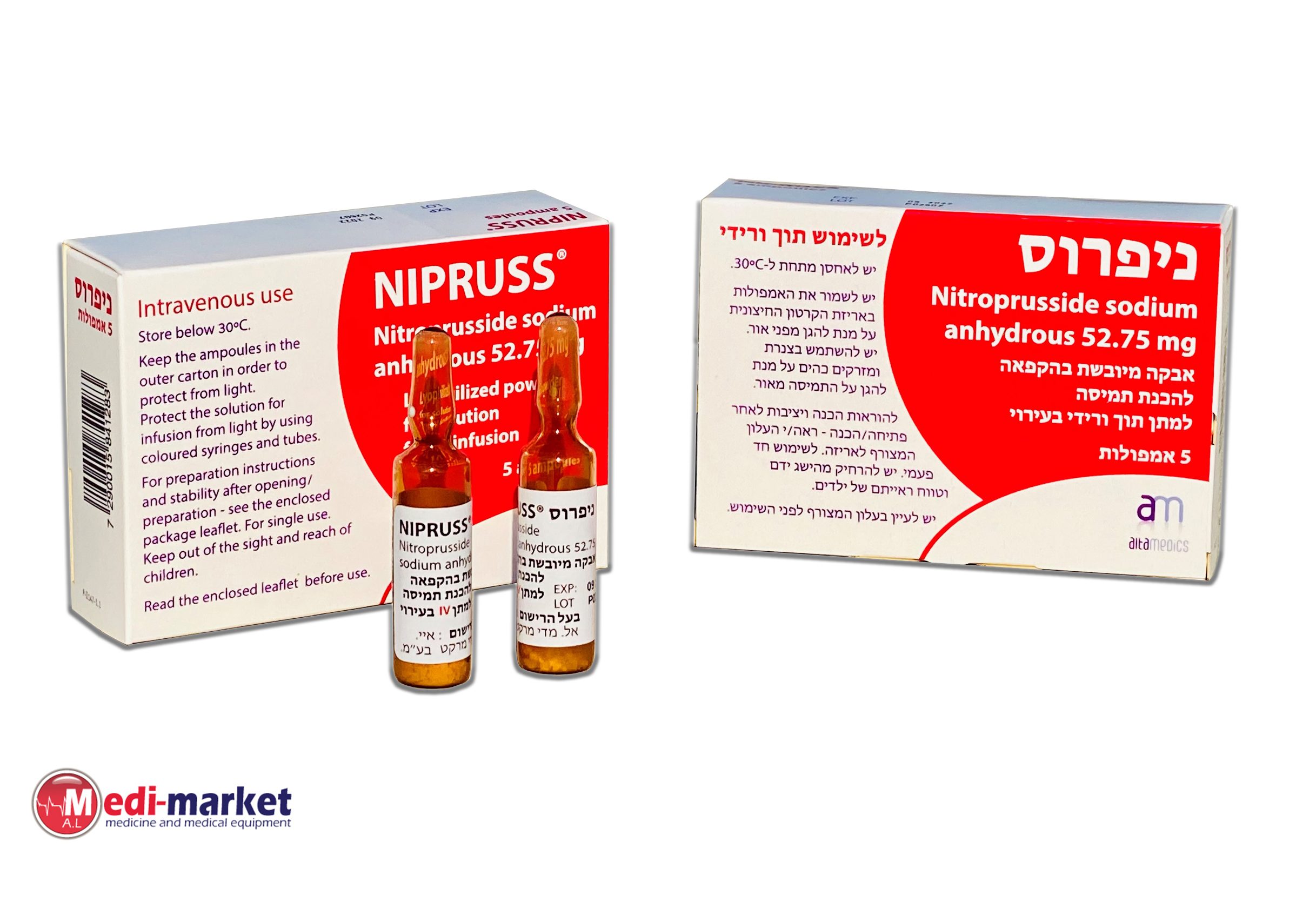Quest for the right Drug

ניפרוס NIPRUSS ® (NITROPRUSSIDE SODIUM ANHYDROUS)
תרופה במרשם
תרופה בסל
נרקוטיקה
ציטוטוקסיקה
צורת מתן:
תוך-ורידי : I.V
צורת מינון:
אבקה להכנת תמיסה לאינפוזיה : POWDER FOR SOLUTION FOR INFUSION
עלון לרופא
מינוניםPosology התוויות
Indications תופעות לוואי
Adverse reactions התוויות נגד
Contraindications אינטראקציות
Interactions מינון יתר
Overdose הריון/הנקה
Pregnancy & Lactation אוכלוסיות מיוחדות
Special populations תכונות פרמקולוגיות
Pharmacological properties מידע רוקחי
Pharmaceutical particulars אזהרת שימוש
Special Warning עלון לרופא
Physicians Leaflet
Special Warning : אזהרת שימוש
4.4 Special warnings and precautions for use In cases of patients who have previously taken PDE5-inhibitors, the application of Nipruss should only occur subject to strict risk/benefit consideration. When using PDE 5-inhibitors a significant intensification of the hypotensive effect of Nipruss may occur, if sodium nitroprusside is given in the 24 hours post-dose sildenafil or vardenafil, or 48 hours post-dose tadalafil, depending on the half-life of the PDE5- inhibitor. In this case, particularly careful dose titration is required. Particularly careful medical supervision is necessary in case of diseases associated with increased intracranial pressure. During the infusion of Nipruss, continuous monitoring of the ECG and, where relevant, of the most important haemodynamic parameters is required. Under surgical conditions, the best way to measure blood pressure is directly via an arterial cannula. In case of infusions administered over several days, blood pressure measurements by a non-invasive technique are sufficient. Patients with renal impairment If Sodium Nitroprusside is infused over several days, thiocyanate levels must be monitored especially in renally impaired patients and must not exceed 6 mg/100 mL. Patients with hepatic impairment Because the cyanide, which is released from sodium nitroprusside, is mainly metabolized by hepatic enzymes, it may accumulate in patients with severe hepatic impairment. Nipruss should therefore be used with caution in patients with hepatic impairment, and dose titration must be done carefully. In patients with hepatic impairment, signs of cyanide toxicity should be monitored more closely (see section 4.8). Cyanide toxicity To effectively prevent cyanide intoxication (owing to the possibility of an inadequate detoxification capacity of the body) see recommendations in Section 4.2. For symptoms of cyanide toxicity, see section 4.8. Sodium Thiocyanate toxicity To manage sodium thiocyanate toxicity, see recommendations in Section 4.2. For symptoms of sodium thiocyanate toxicity, see section 4.8. Nipruss contains less than 1 mmol sodium (23 mg) per ampoule (60 mg), i.e. it is almost “sodium free”.
Effects on Driving
4.7 Effects on ability to drive and use machines Not relevant.

שימוש לפי פנקס קופ''ח כללית 1994
לא צוין
תאריך הכללה מקורי בסל
לא צוין
הגבלות
לא צוין
מידע נוסף
